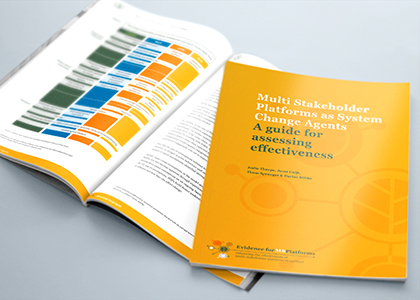Starting point for assessment is a clear theory of change (ToC) setting out MSP goals, intermediate results that are expected to contribute to these goals, and assumptions regarding these pathways. Progress is monitored by combining the ToC with evidence and analysis to develop ‘contribution stories’ that act as snap-shot narratives. They are a reasoned discussion of why and how changes are happening, considering the plausibility of the role or ‘contribution’ of the MSP to these outcomes, alongside other factors.
This guidance presents as four steps for assessing effectiveness, plus six tips or lessons for putting these steps into practice. Armed with this guidance, MSPs should become more deliberate in their own thinking, and in their engagement with stakeholders regarding how they are catalysing change over time.


